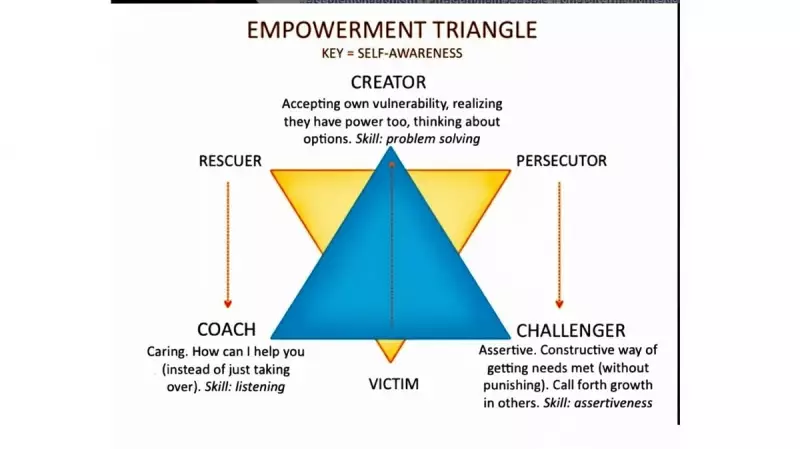
Have you ever found yourself trapped in repetitive, exhausting conflicts that seem to follow the same destructive pattern? Whether in boardrooms or living rooms, many of us unknowingly participate in what psychologists call the Drama Triangle - a psychological model that explains why certain relationships become toxic cycles.
Understanding the Three Roles That Keep You Stuck
The Drama Triangle, developed by Dr. Stephen Karpman, identifies three interconnected roles that people switch between during conflicts:
- The Victim: Feels powerless and oppressed, constantly seeking rescuers
- The Persecutor: Criticizes, blames, and controls others
- The Rescuer: Intervenes to "save" others, often creating dependency
"These roles create a self-perpetuating cycle where everyone loses," explains psychological experts. "The Victim feels helpless, the Persecutor becomes the villain, and the Rescuer burns out from constant saving."
How to Spot Drama Triangle Patterns in Your Life
Recognizing these patterns is the first step toward freedom. Common signs include:
- Repeating the same arguments with different people
- Feeling drained after interactions
- Constantly blaming others or circumstances
- Taking responsibility for problems that aren't yours
- Feeling like situations are hopeless to change
The Empowerment Triangle: Your Path to Healthier Dynamics
The solution lies in transforming the Drama Triangle into what experts call the "Empowerment Triangle":
- From Victim to Creator: Shift from helplessness to taking responsibility for your choices
- From Persecutor to Challenger: Replace blame with constructive feedback and boundaries
- From Rescuer to Coach: Instead of saving, empower others to solve their own problems
Practical Steps to Break Free Today
Transforming these patterns requires conscious effort and practice:
1. Pause and Reflect: When conflict arises, ask yourself: "Which role am I playing right now?"
2. Take Responsibility: Focus on what you can control rather than what others should do differently.
3. Set Healthy Boundaries: Learn to say no without guilt and respect others' boundaries.
4. Practice Self-Awareness: Notice when you're slipping into familiar patterns and consciously choose differently.
5. Seek Support: Consider professional guidance if these patterns significantly impact your life.
Breaking free from the Drama Triangle isn't about blaming yourself for past patterns, but about empowering yourself to create healthier relationships moving forward. By recognizing these dynamics and consciously choosing different responses, you can transform exhausting conflicts into opportunities for growth and connection.
Remember: The goal isn't to eliminate all conflict, but to navigate disagreements in ways that build understanding rather than destroy relationships. Your journey out of the Drama Triangle begins with a single conscious choice to respond differently.





